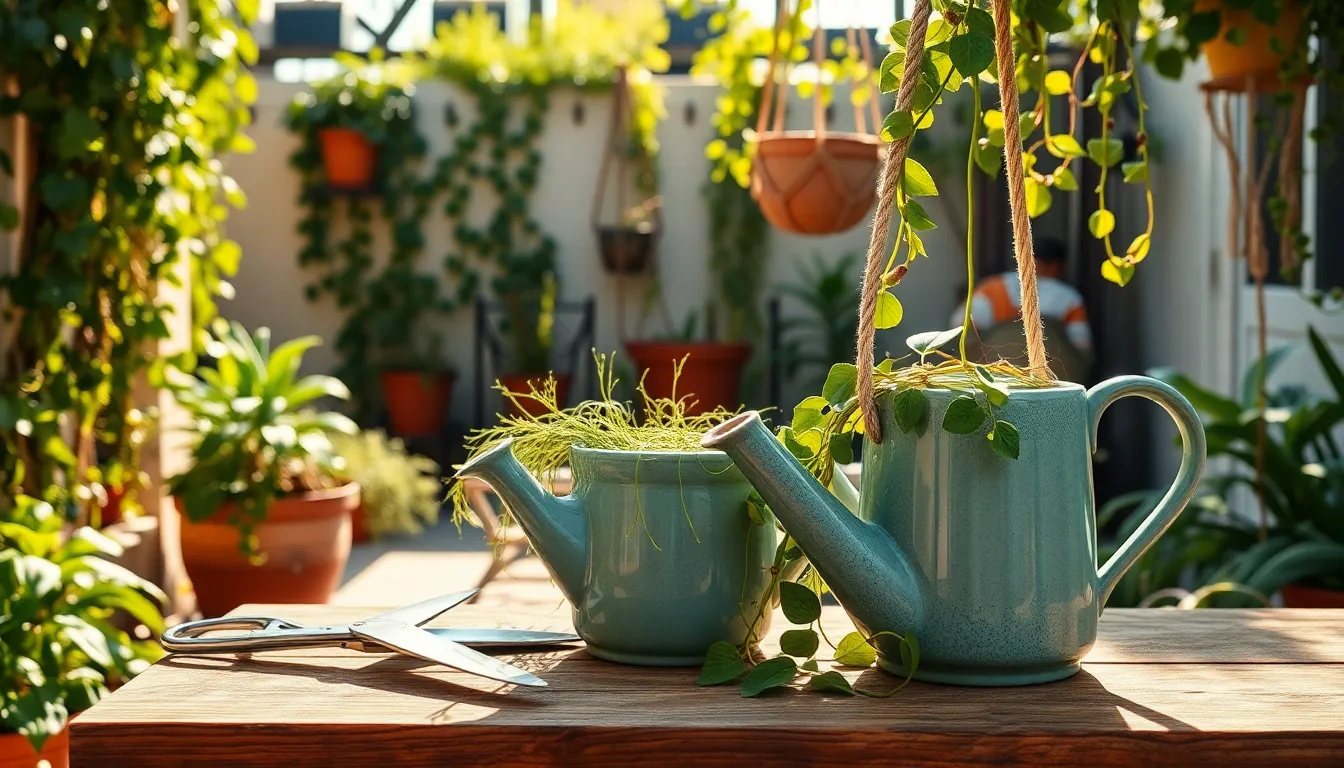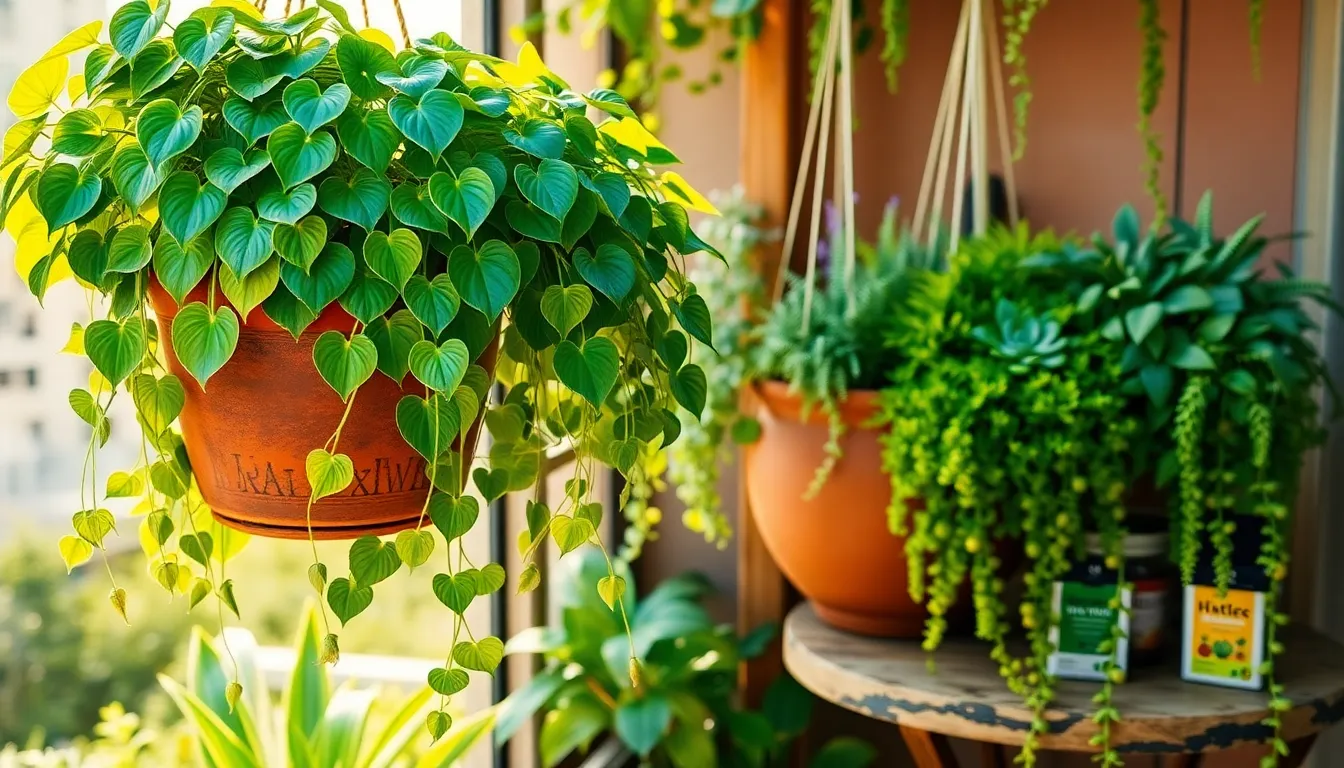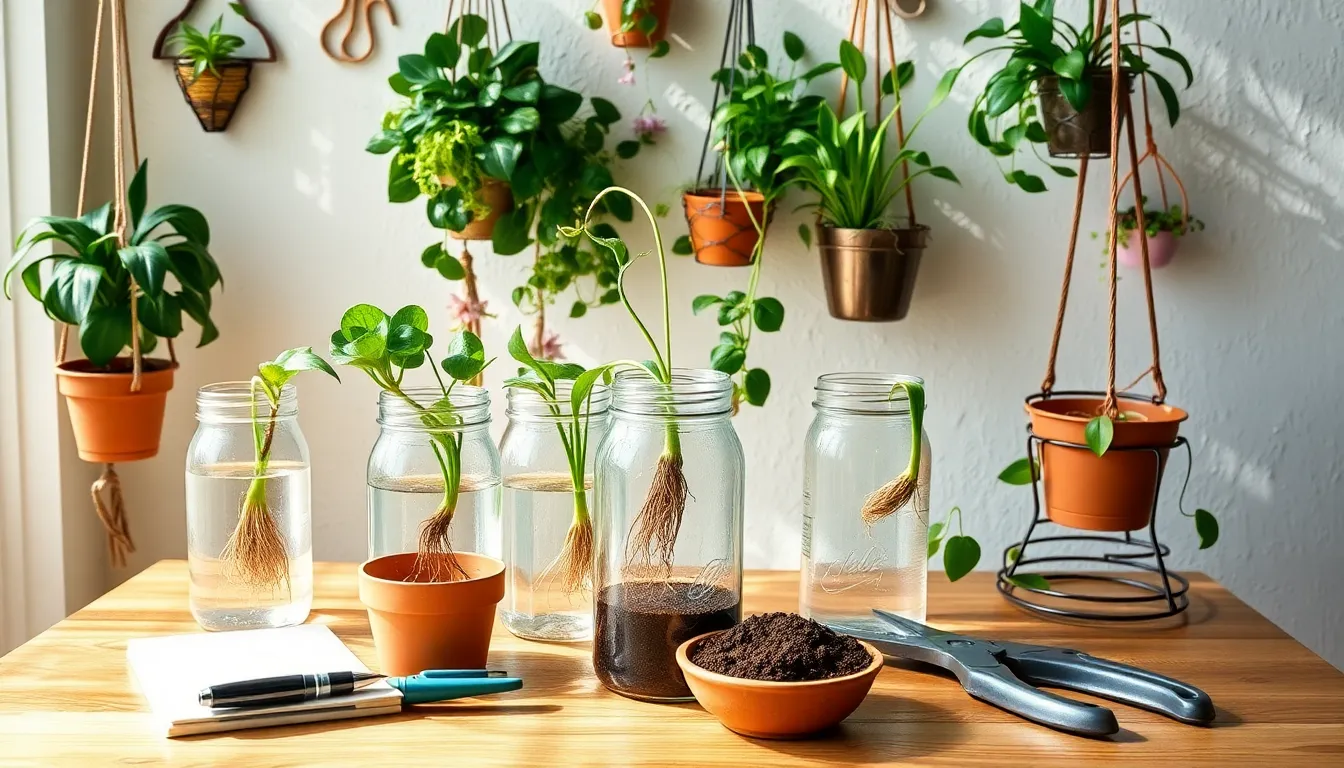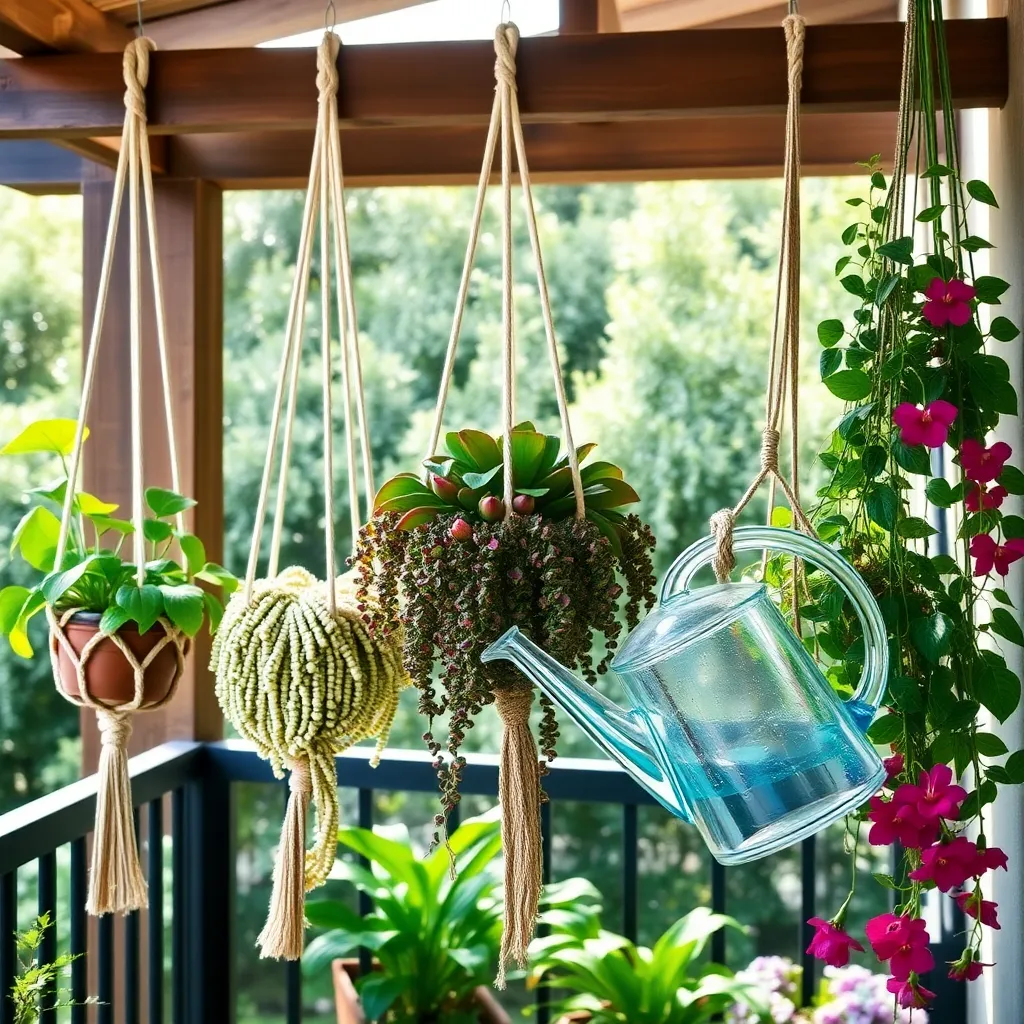Welcome to the enchanting world of hanging plants, where lush greenery floats effortlessly, bringing life and vibrancy to any space. Whether you’re just starting your journey into gardening or you’re a seasoned plant enthusiast, caring for hanging plants is a delightful way to add vertical interest and beauty to your home or garden. Hanging plants offer a unique set of challenges and rewards, requiring a special set of tools to ensure they thrive.
You’ll find that the right tools not only make the care of hanging plants easier but also enhance your overall gardening experience. In this article, we’re eager to guide you through the nine essential tools that will become your trusted allies in nurturing your suspended gardens. These tools will help you water, prune, and display your plants with confidence and flair, ensuring they remain healthy and vibrant. From innovative watering cans to versatile hooks, each tool has been carefully selected to simplify and enhance your hanging plant care routine.
So, whether you’re dreaming of cascading ferns in your living room or a colorful array of blooms cascading from your porch, we’ve got you covered. With our expert insights and practical advice, you’ll soon be equipped to transform your space into a verdant paradise. Let’s dive in and explore these must-have tools that will empower you to care for your hanging plants with ease and joy.
Choosing the Perfect Watering Can
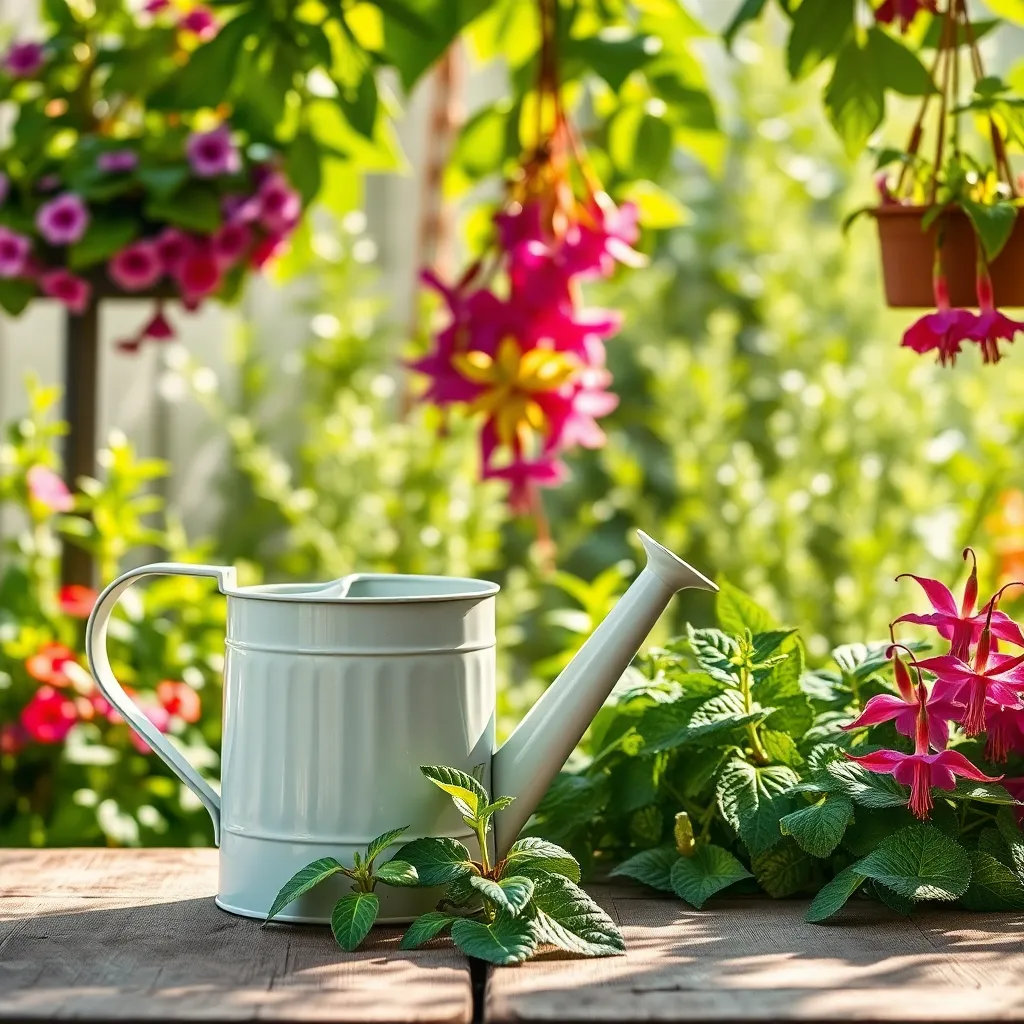
When choosing the perfect watering can for your hanging plants, consider the size and weight to ensure ease of use. A can with a capacity of around two to three liters is often ideal, allowing you to water multiple plants without frequent refills.
Look for a long spout design to help you reach hanging pots without spilling water everywhere. This feature allows precise watering, which is crucial for avoiding overwatering and ensuring the water reaches the plant’s roots.
Opt for a watering can with a rose attachment to create a gentle shower that mimics natural rain. This is particularly beneficial for delicate plants or those with soil that can easily become compacted.
For advanced care, consider a can with a detachable rose, giving you the option to water more directly when needed. This flexibility can help when you need to saturate the soil during particularly hot weather or when the plant shows signs of dehydration.
Pruning Shears for Precise Trimming

Pruning shears are essential for maintaining the health and appearance of your hanging plants. These handy tools allow you to make clean cuts, which help prevent diseases and promote healthy growth.
When selecting pruning shears, consider the size and type of your plants. For delicate vines or small foliage, choose a pair with sharp, narrow blades for precise trimming.
Keep your shears sharp to ensure clean cuts that heal quickly, reducing the risk of infection. Regularly disinfecting them with rubbing alcohol can also help prevent the spread of plant diseases.
For more advanced gardeners, consider shears with adjustable tension, which can be customized for different plant types. This feature can make trimming easier on your hands, especially during extended pruning sessions.
Durable Plant Hangers and Hooks
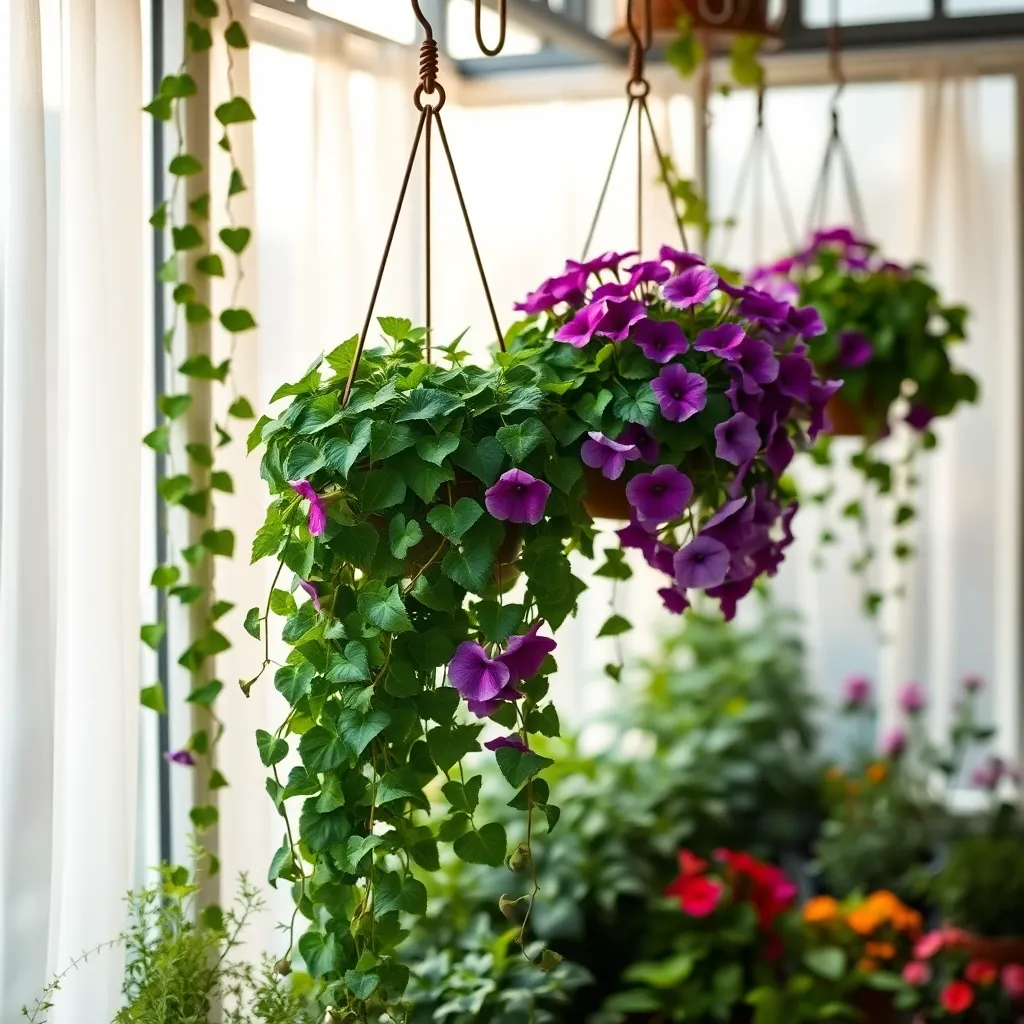
When it comes to hanging plants, using durable plant hangers and hooks is essential for both safety and aesthetics. For beginners, opting for hangers made from materials like metal or heavy-duty plastic ensures they can support the weight of your plants without bending or breaking.
Experienced gardeners often choose hooks that are weather-resistant, ensuring they withstand outdoor conditions without rusting. Consider using hooks with a powder-coated finish for extra durability in humid climates, protecting them from corrosion.
Installing plant hangers requires a little bit of planning for optimal placement and balance. Always ensure hooks are anchored into studs or use wall anchors rated for the weight of your plants to prevent accidents.
For a professional touch, you might consider adjustable hangers that allow you to change the height of your plants easily. This feature is particularly useful for plants that need varying amounts of light throughout the year, such as ferns or spider plants.
Moisture Meters: Monitoring Soil Hydration
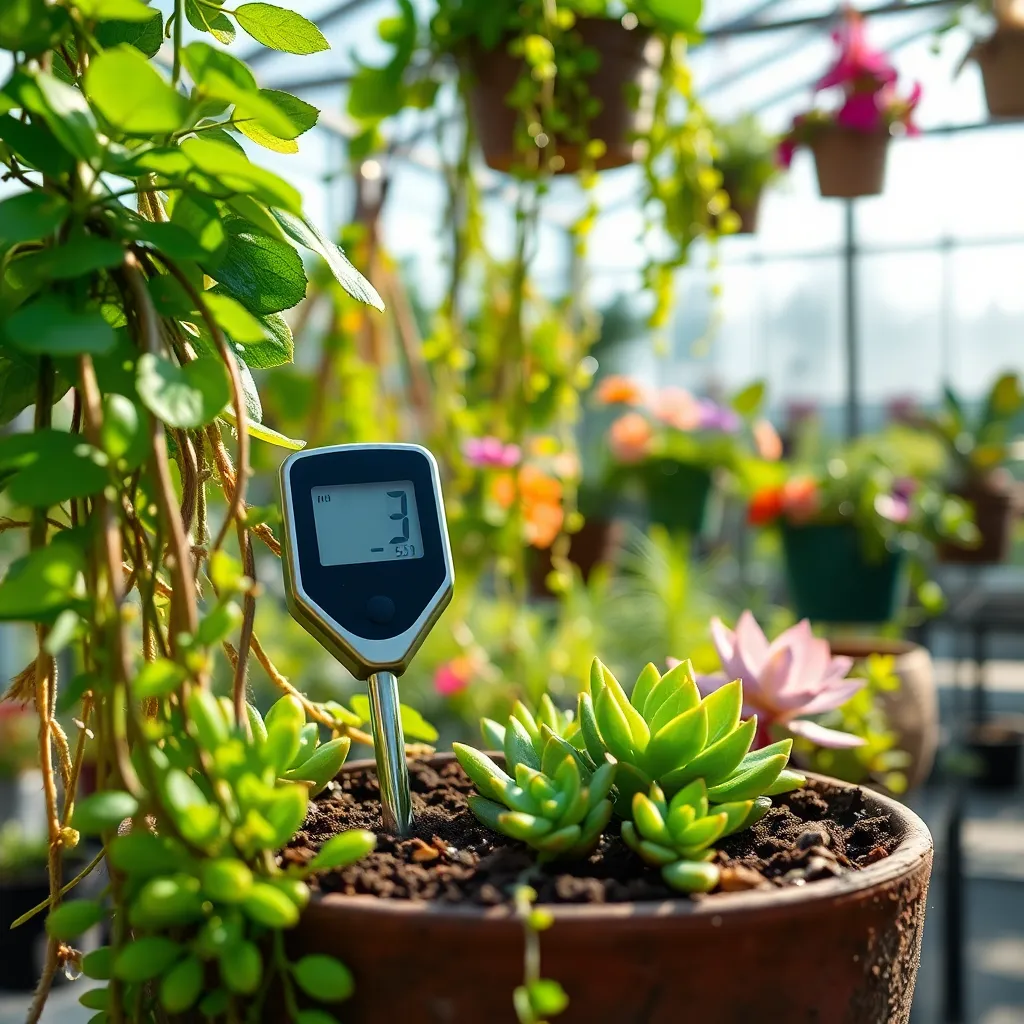
Moisture meters are an essential tool for ensuring your hanging plants receive the right amount of water. These devices help you determine the soil moisture level, preventing both under-watering and over-watering, which are common issues with hanging plants.
To use a moisture meter, simply insert the probe into the soil near the plant’s roots. Check the reading to decide if your plant needs watering; a reading in the dry to slightly moist range indicates it’s time to water.
For best results, it’s advisable to test the soil at multiple points in the pot. This ensures you’re getting an accurate assessment of the moisture level throughout the soil, not just in one spot.
Beginners will find moisture meters particularly helpful in developing a watering routine. Consider using a moisture meter especially if you’re not familiar with the specific water needs of your plants, as different plants have varying moisture requirements.
Advanced gardeners might use moisture meters to fine-tune their watering schedules based on the specific needs of different species. Some meters even come with additional features, like light and pH sensors, providing a comprehensive tool for plant care enthusiasts.
Light Meters for Optimal Sunlight
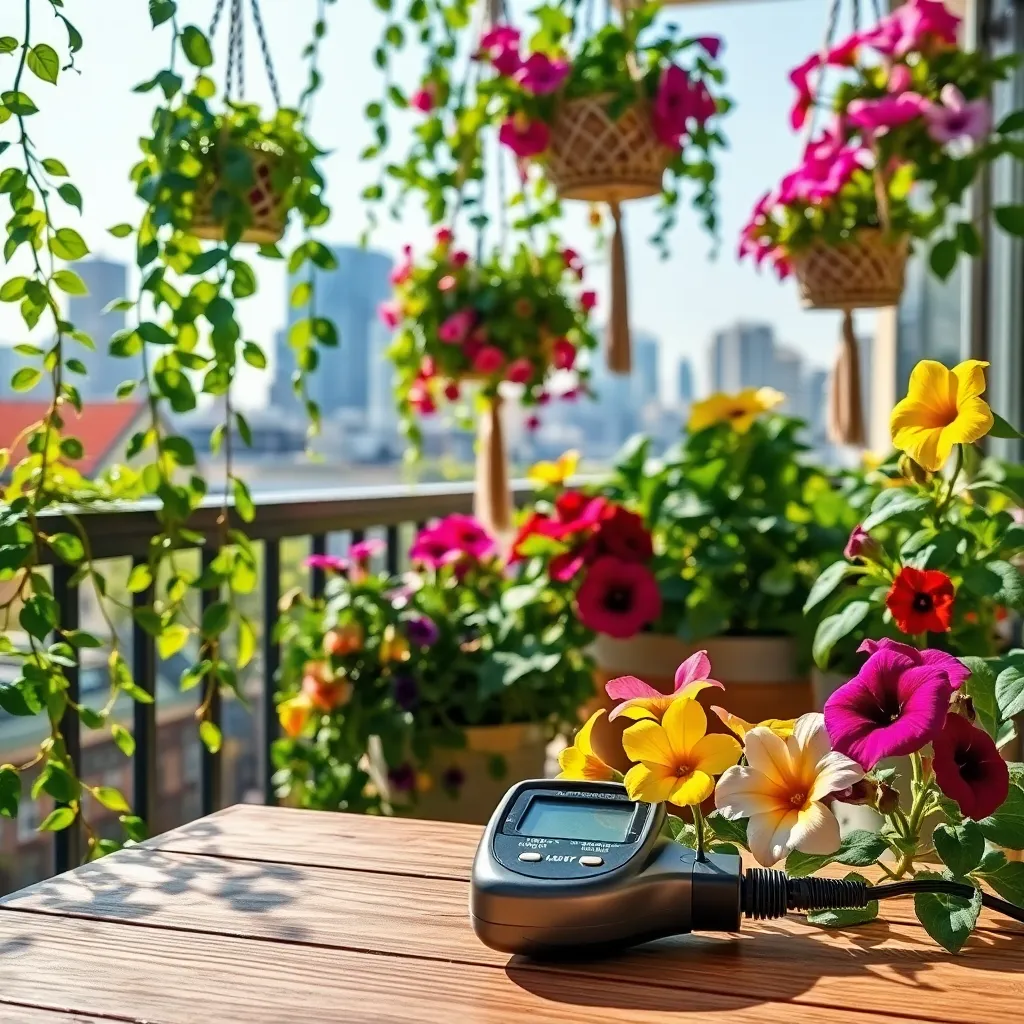
Understanding the light needs of your hanging plants is crucial for their health and growth, and a light meter can be an invaluable tool in achieving this. By measuring the exact amount of light your plants receive, you can make informed decisions about their placement within your home or garden.
Using a light meter is straightforward and provides accurate readings that go beyond simple observation. Simply place the meter near your hanging plants and note the light levels at different times of the day to ensure they are receiving appropriate sunlight.
For beginners, this tool can help you learn about your plants’ sunlight requirements, ensuring they are not placed in overly sunny or too shady locations. Advanced gardeners can use light meters to fine-tune plant placement, maximizing growth by adjusting positions based on seasonal changes in sunlight.
Moreover, light meters can assist in determining the best locations for new plant additions, allowing you to create an optimal environment from the start. Consider the specific light needs of each plant species, as some may thrive in bright direct light while others prefer indirect light conditions.
Ladders: Safe Access to Heights
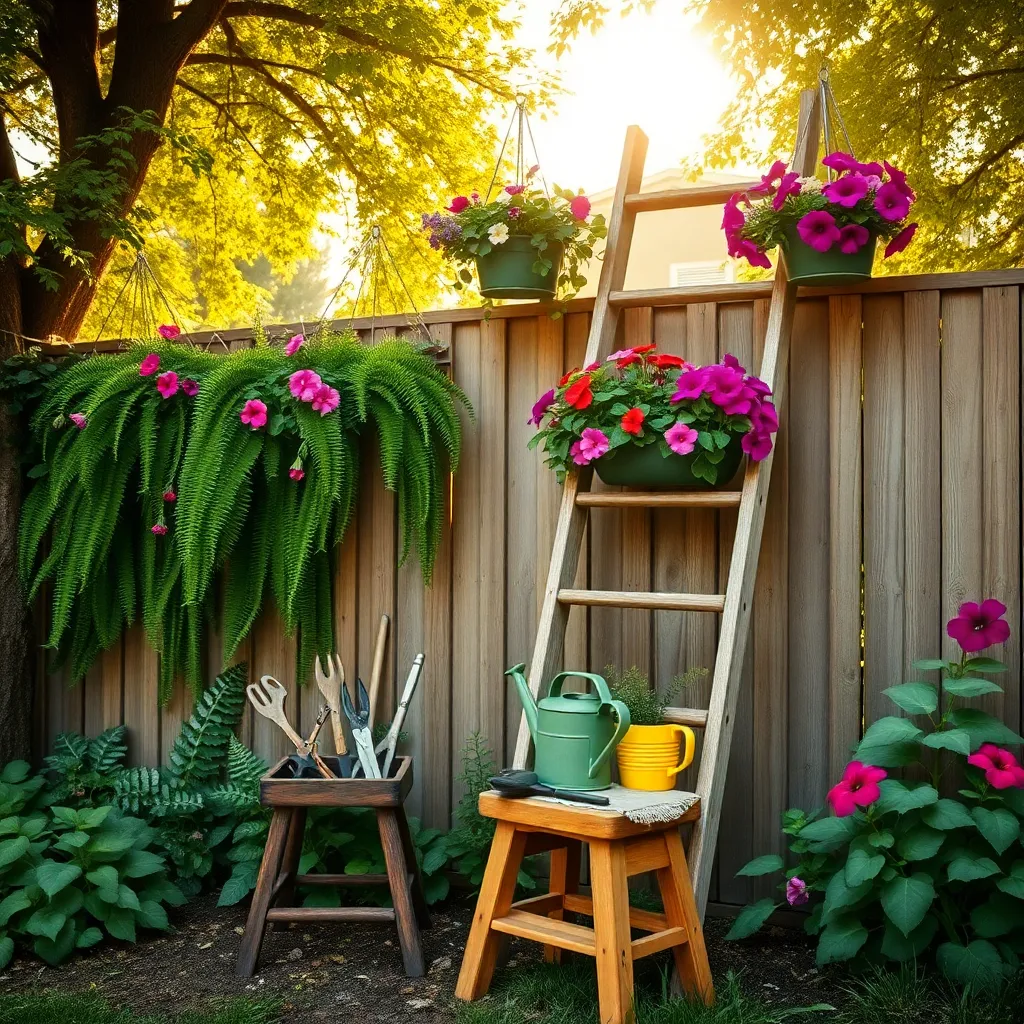
When caring for hanging plants, reaching higher spots safely is essential, and a reliable ladder can make all the difference. Choose a sturdy ladder with a broad base to prevent any wobbling, ensuring your safety as you tend to your plants.
It’s important to match the ladder size to your ceiling height to avoid overstretching, which can lead to accidents. For most indoor settings, a step ladder of about 4 to 6 feet is usually adequate, providing you with easy access to higher areas.
For outdoor use, consider a lightweight aluminum ladder, which is both durable and easy to move around your garden. Regularly inspect your ladder for any wear and tear, such as loose bolts or rungs, to maintain its safety and functionality.
Beginners should practice setting up their ladder on a flat surface, ensuring all four feet are stable before climbing. For seasoned gardeners, using a ladder with a tool tray can keep essential items like scissors or a watering can within arm’s reach, making plant care more efficient.
Fertilizer Dispensers for Balanced Feeding

Fertilizer dispensers are an excellent tool for ensuring your hanging plants receive balanced nutrition without the mess. These handy devices can be attached to your watering can or garden hose, making it easy to apply the right amount of fertilizer each time you water.
By using a fertilizer dispenser, you can provide your plants with a steady supply of nutrients, which is crucial for their growth and health. This method is particularly beneficial for hanging plants, as it helps prevent over-fertilizing, which can lead to root damage or nutrient burn.
Beginners will find that these dispensers simplify the feeding process by allowing them to measure and mix fertilizers accurately. For experienced gardeners, utilizing a dispenser can help fine-tune the nutrient delivery, ensuring that each plant gets exactly what it needs according to its growth stage.
Consider using a slow-release liquid fertilizer in your dispenser, especially one formulated for hanging plants, to promote lush foliage and abundant blooms. Regular feeding every two weeks during the growing season can significantly enhance your plants’ vitality and overall appearance.
Insect Control Tools for Healthy Growth
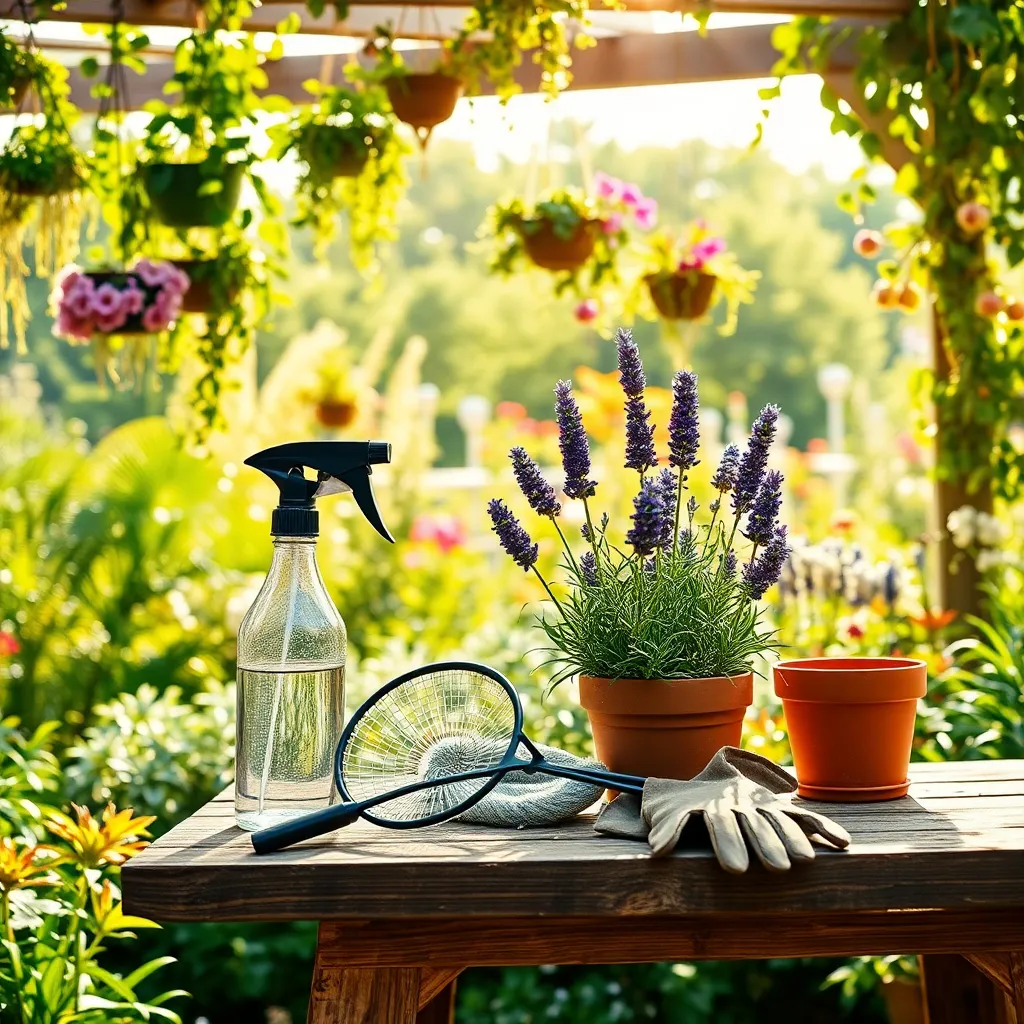
Maintaining healthy hanging plants requires effective insect control tools to protect them from unwanted pests. Insecticidal soaps are a natural solution that can effectively target soft-bodied insects such as aphids and spider mites without harming your plants or the environment.
For more stubborn infestations, consider using neem oil as it disrupts the life cycle of many common garden pests. Regularly apply neem oil by mixing it with water and spraying it on affected areas, ensuring both the tops and undersides of the leaves are treated.
Another great tool for insect control is the use of sticky traps, which can capture flying insects like whiteflies and fungus gnats. Hang these traps near your plants to monitor and reduce insect populations without using chemicals.
For those who prefer a more hands-on approach, manual removal of pests can also be effective. Regularly inspect your plants, and use a soft brush or a strong stream of water to dislodge insects, ensuring you reach all parts of the plant, especially the undersides of leaves where pests often hide.
Cleaning Tools for Dust-Free Leaves
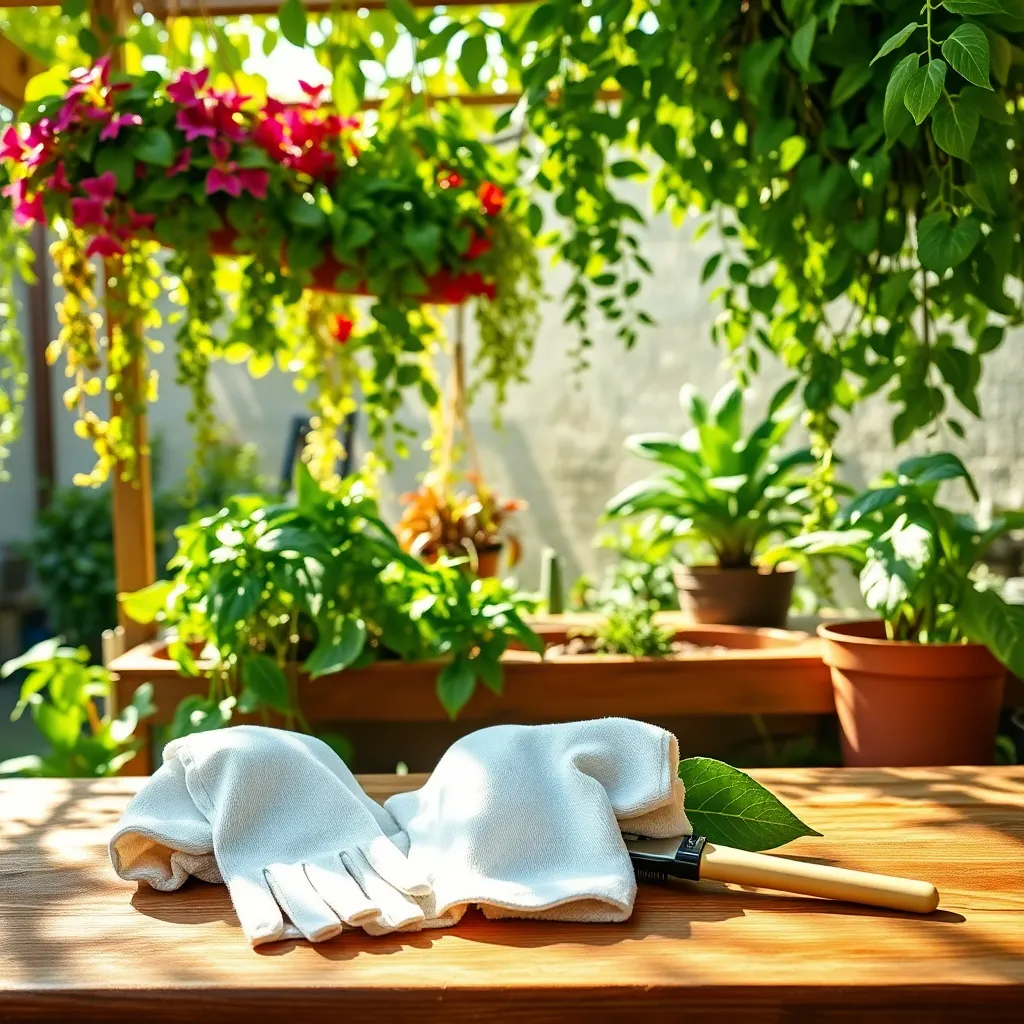
Keeping leaves dust-free is essential for the health and appearance of your hanging plants. Dust buildup can block sunlight and reduce photosynthesis, so regular cleaning is crucial.
One effective tool for cleaning plant leaves is a soft microfiber cloth. Gently wiping the leaves with a damp cloth can remove dust without damaging the plant’s surface.
For those hard-to-reach places, such as the undersides of leaves, a small, soft-bristled brush can be very useful. This method ensures that every part of the leaf is clean, promoting optimal light absorption and plant health.
Consider using a diluted solution of water and mild dish soap for a deeper clean. Mix a few drops of soap in a spray bottle with water and lightly mist the leaves, then wipe them clean to remove any residue.
Conclusion: Growing Success with These Plants
In nurturing your relationship, just as with hanging plants, the right tools make all the difference. We’ve explored nine essential concepts: effective communication, trust-building, consistent nurturing, shared responsibilities, understanding love languages, managing conflicts, setting boundaries, celebrating successes, and maintaining individuality. Each is vital in fostering a thriving, resilient partnership.
To bring these insights to life, take a moment today to engage in open communication with your partner. Express appreciation, discuss a shared goal, or simply listen—small steps lead to significant growth.
For continued success and as a handy resource, save this article. Bookmark it now, ensuring you have these valuable insights at your fingertips whenever your relationship needs a little extra care.
Looking ahead, remember that a flourishing relationship is built on continuous effort and mutual understanding. By incorporating these tools into your daily interactions, you’re laying the foundation for a long-lasting, joyful partnership. Embrace the journey and empower yourself to cultivate a relationship that thrives, just like the most vibrant hanging garden.

